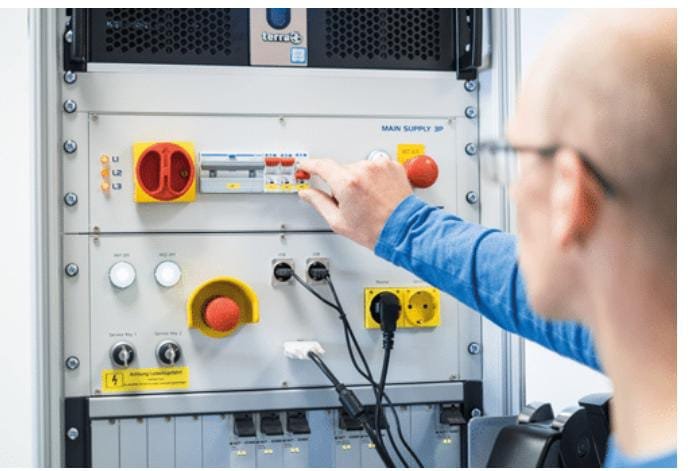Maintaining airplane safety depends critically on avionics test equipment, which guarantees precise performance of navigation, communication, and control systems. Effective use of this tool helps personnel to diagnose, calibrate, and validate avionics components, thereby enabling dependable and safe operation. Following certain guidelines will help you maximize the accuracy and efficiency of your testing process, thereby supporting consistent aircraft performance.
Preparing the Workspace and Equipment
Good testing and calibration depend on a well-prepared workstation. Make sure your workplace is tidy and clear of any extraneous tools or anything that can impede the procedure first. Maintaining the avionics test equipment in its proper place, every component is easily reachable. A good workplace arrangement helps you to concentrate just on the current testing job by minimizing distractions and the possibility of inadvertent harm. Apart from setting up the workstation, carefully check the test apparatus to verify it is in perfect state. Companies like Pilot John International provide high-quality testing equipment and support to ensure reliable calibration. Even minor issues can impact test accuracy, inspect cables, connections, and screens for any wear or damage, and calibrate tools as necessary for precise operation.
Reviewing the Testing Procedures
Reviewing the testing protocols and particular avionics system requirements is quite vital. Every avionics system has distinct qualities and may need specific settings or methods for accurate testing. Learn the test techniques described in the handbook for the equipment and any other instructions supplied by the aircraft manufacturer. Knowing these techniques helps you to prevent mistakes and guarantee that the testing process conforms with industry norms. Once acquainted with the testing procedures, note any particular needs, including voltage ranges, frequency ranges, or ambient conditions. Verifying these limits guarantees proper configuration of the test apparatus, therefore generating consistent results reflecting the status of the system. Reviewing processes also helps you to be secure as it helps you to approach every stage with assurance.
Connecting the Equipment Safely and Securely
Careful handling of avionics test equipment connected to the aircraft helps to avoid damage to the systems of the aircraft as well as the equipment. Before connecting anything, first, make sure all of the power sources are off. This phase eliminates inadvertent surges or shorts that can compromise delicate avionics parts. Align connections carefully to prevent bending pins or damaged ports, therefore guaranteeing a robust and safe connection that preserves signal integrity during the testing procedure. Once linked, examine each connection for stability and verify that every cable is properly fastened. Incorrect or loose connections could affect the quality of your readings, therefore producing erroneous conclusions. Correctly tightened connections improve safety by preventing unexpected disconnections during testing and, therefore, preserve the integrity of the data.
Running the Tests
Reliable findings that fairly represent the condition of the avionics system depend on the precise running of tests. Make sure that voltage, frequency, and signal intensity match the values described in your review by adjusting the test equipment to the necessary ranges. Proceed with the testing procedure in a consistent, under-control way once the equipment is tuned and connections are tightened. Not every reading and track any variations or abnormalities that could point to system problems. Maintaining consistency across the testing period is also crucial, as even little differences might affect outcomes. To reduce interference, maintain external circumstances as constant as you can and avoid needless changes in settings or fast modifications. Running every test carefully and precisely helps you to compile reliable and consistent data, providing a comprehensive knowledge of the functioning of the avionics system.
Documenting and Analyzing the Results
Tracking the state of the avionics system and offering a basis for the next maintenance depends on the complete recording of test findings. Carefully note the parameters, settings, and circumstances under which the test was carried out on every measurement. Accurate documentation improves traceability, therefore enabling technicians to see over time repeating problems or trends in the system. This performance and dependability record of outcomes offers insightful analysis of the avionics component performance. Examine the results once they have been recorded to ascertain whether any need more investigation or correction. Using the data to drive focused maintenance, look for trends implying any flaws or deviations inside the system. By means of a thorough knowledge of the performance of the system, a complete analysis guarantees that any required repairs or calibrations are grounded, thereby resulting in exact interventions improving safety and functionality.
Conclusion
Using avionics test equipment correctly combines planning, accuracy, and extensive documentation. From desk organization to result analysis, every step, from maintenance of important aviation systems to precise diagnosis, helps to ensure their effectiveness. Excellent testing guarantees avionics systems run as expected and maintain the highest standards in aviation maintenance, therefore providing a reliable basis for every trip.
